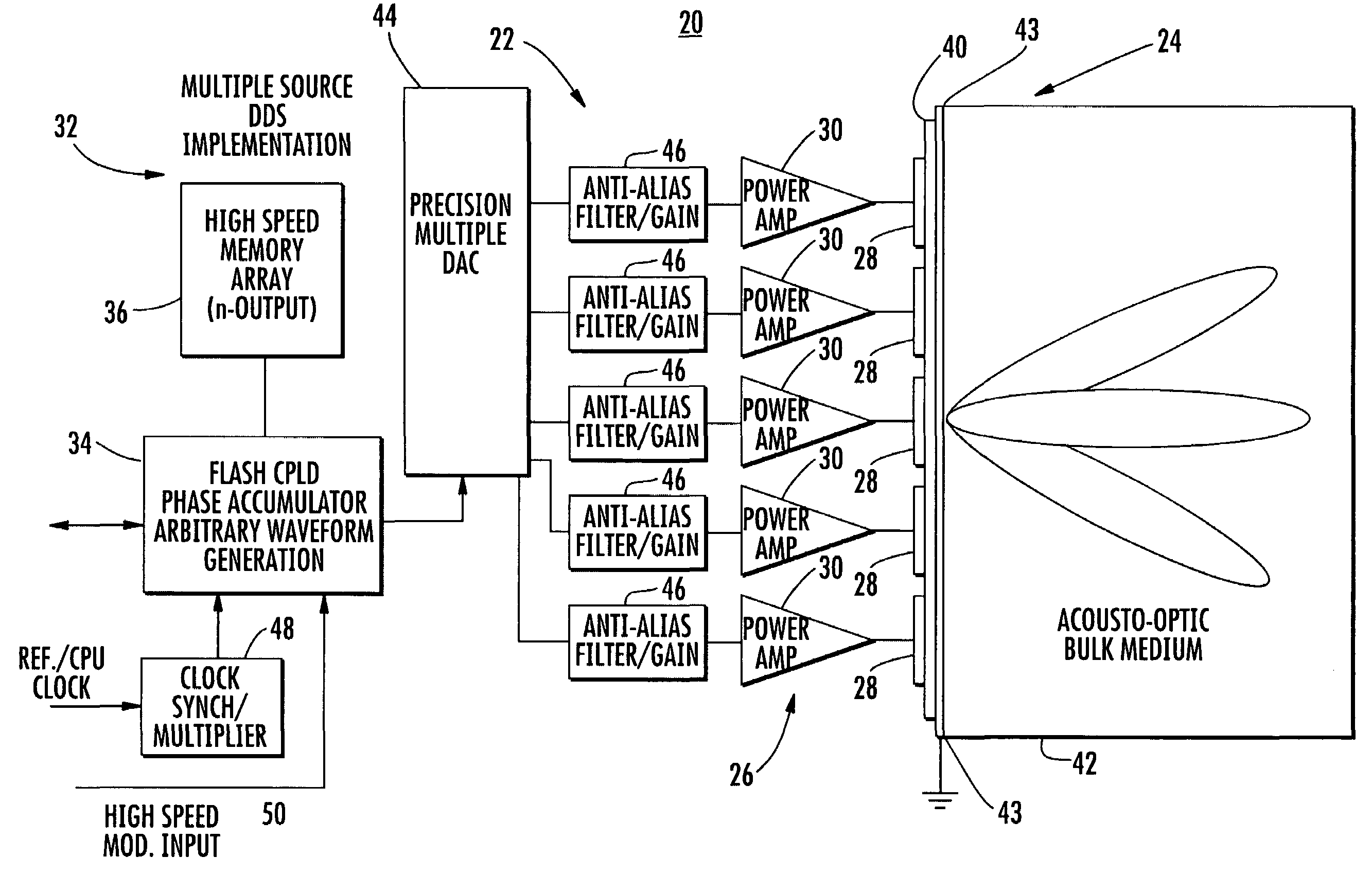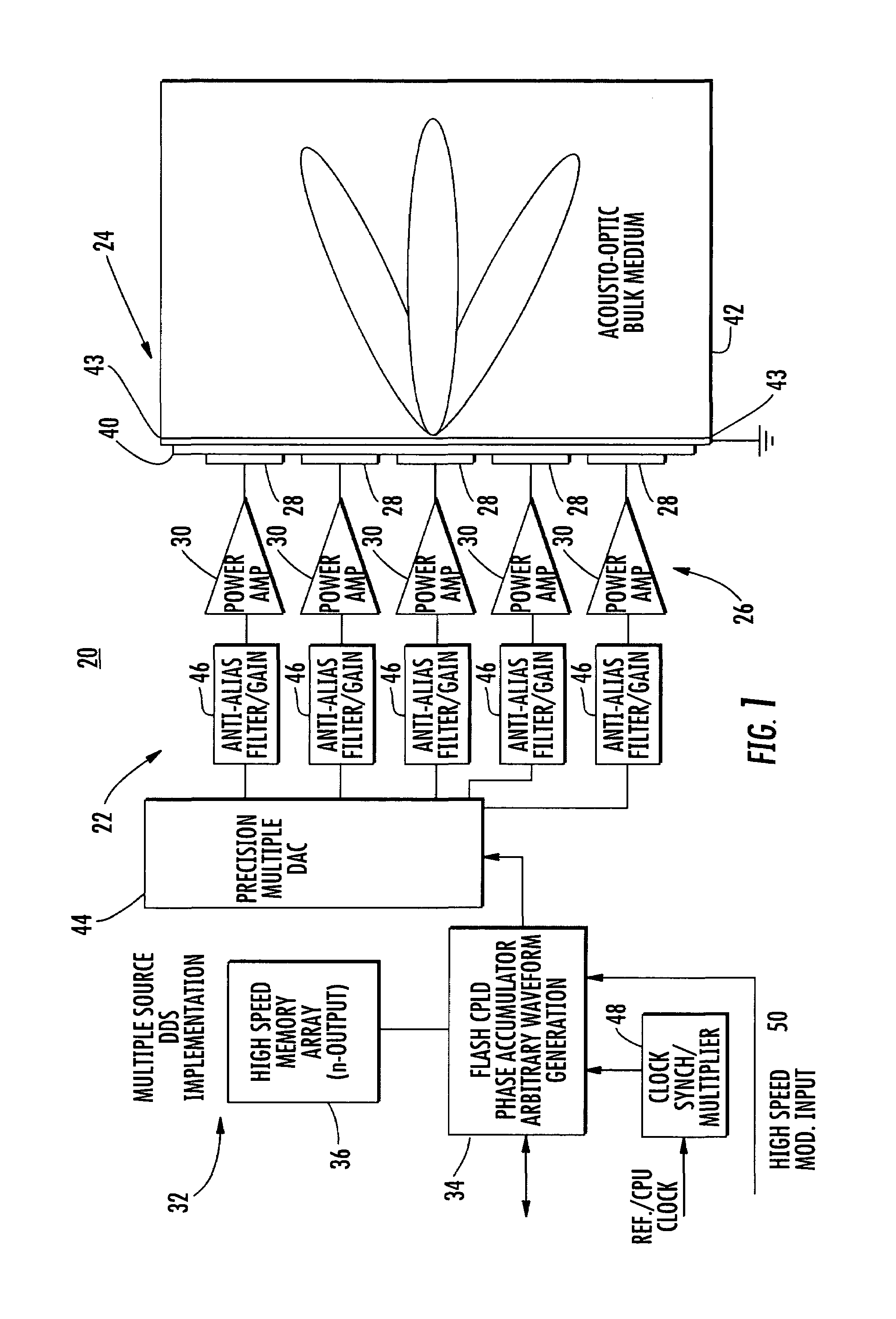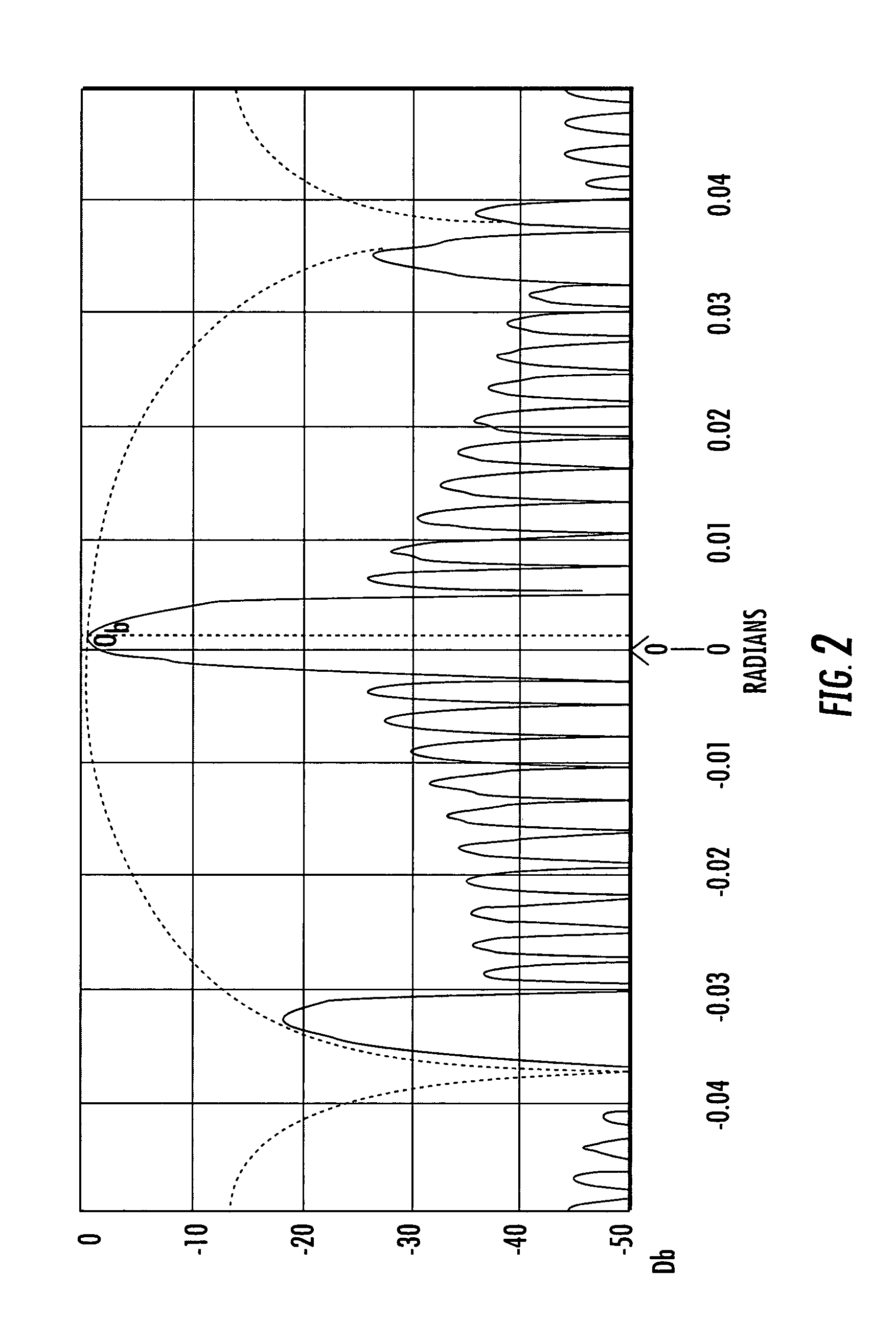RF phase modulation technique for performing acousto-optic intensity modulation of an optical wavefront
a phase modulation and wavefront technology, applied in non-linear optics, instruments, optics, etc., can solve the problems of affecting the resolution of the focused spot, and requiring additional and/or more expensive power supplies
- Summary
- Abstract
- Description
- Claims
- Application Information
AI Technical Summary
Benefits of technology
Problems solved by technology
Method used
Image
Examples
Embodiment Construction
[0027]Different embodiments will now be described more fully hereinafter with reference to the accompanying drawings, in which preferred embodiments are shown. Many different forms can be set forth and described embodiments should not be construed as limited to the embodiments set forth herein. Rather, these embodiments are provided so that this disclosure will be thorough and complete, and will fully convey the scope to those skilled in the art. Like numbers refer to like elements throughout.
[0028]FIG. 1 is a block diagram of an acousto-optic modulator 20 and showing a transducer driver 22 for an acousto-optic device 24 as an acousto-optic modulator in accordance with a non-limiting example of the present invention. The acousto-optic modulator 20 shown in FIG. 1 overcomes the disadvantages of conventional acousto-optic modulators that rely on large and costly hybrid output RF amplifiers to provide a requisite drive power necessary for useful operation of the device. In these prior ...
PUM
| Property | Measurement | Unit |
|---|---|---|
| thick | aaaaa | aaaaa |
| acoustic thickness | aaaaa | aaaaa |
| acoustic thickness | aaaaa | aaaaa |
Abstract
Description
Claims
Application Information
 Login to View More
Login to View More - R&D
- Intellectual Property
- Life Sciences
- Materials
- Tech Scout
- Unparalleled Data Quality
- Higher Quality Content
- 60% Fewer Hallucinations
Browse by: Latest US Patents, China's latest patents, Technical Efficacy Thesaurus, Application Domain, Technology Topic, Popular Technical Reports.
© 2025 PatSnap. All rights reserved.Legal|Privacy policy|Modern Slavery Act Transparency Statement|Sitemap|About US| Contact US: help@patsnap.com



